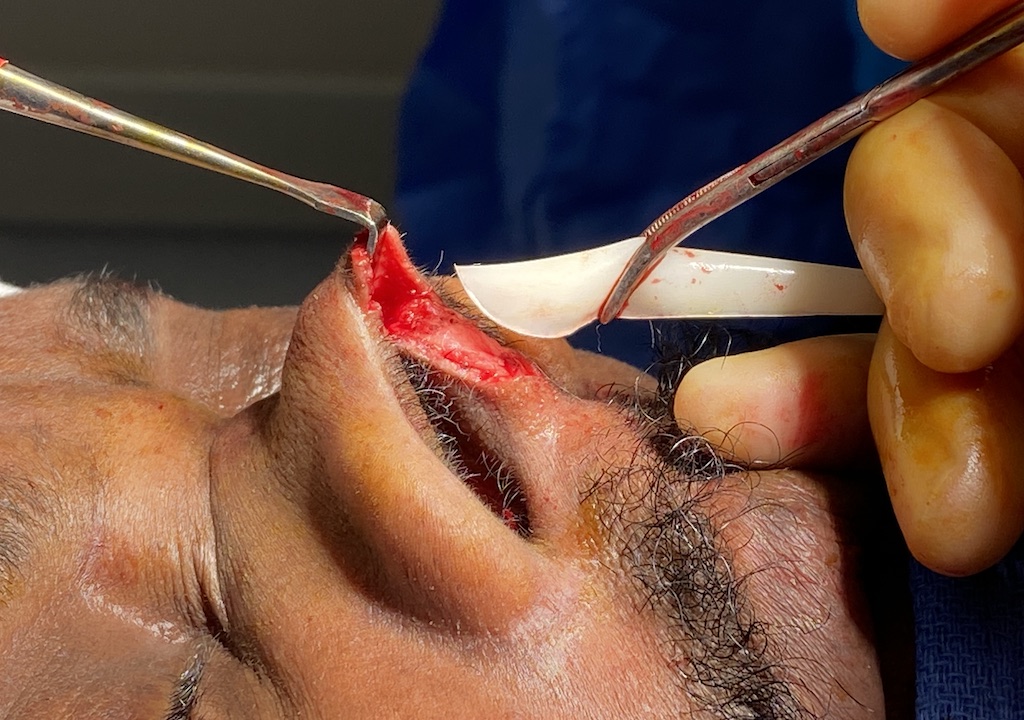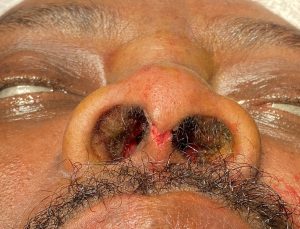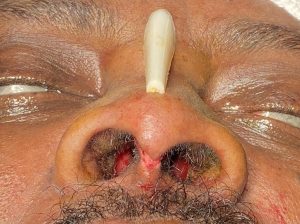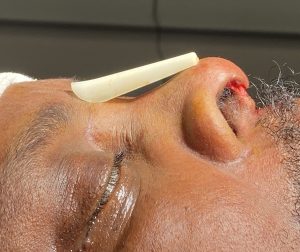The most common method of facial augmentation performed around the world is a nasal implant. While there are two different methods of placing a nasal implant, open vs closed, the method used depends on what else is being done to the nose. If the nose is being opened anyway then how the implant is introduced is obvious. Such direct visualization allows for the optimal placement of the implant as well as the ability to stabilize it with sutures.
But when it’s placement is the primary method used in the rhinoplasty it is most commonly going to be placed in a closed manner. This means an intranasal incision is made inside one of the nostrils between the cephalic margin of the lower alar cartilage and the upper alar cartilages which provides to the nasal dorsum.
The intranasal method of implant placement does avoid a scar and is fast and easy to peform. But it does have several disadvantages including a higher risk of infection, a higher risk of implant asymmetry due to the one-sided access and the incision is very close to where the nasal implant lies.
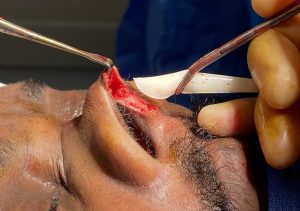

It is a good guideline to always make am implant pocket dissection anywhere on the face or body along the desired axis of implant placement. The nasal implant is the most linear implant used in the body with the exception of calf implants. Thus even as an isolated technique in rhinoplasty coming in directly through a skin incision provides the most assurance of accurate and uncomplicated placement.

